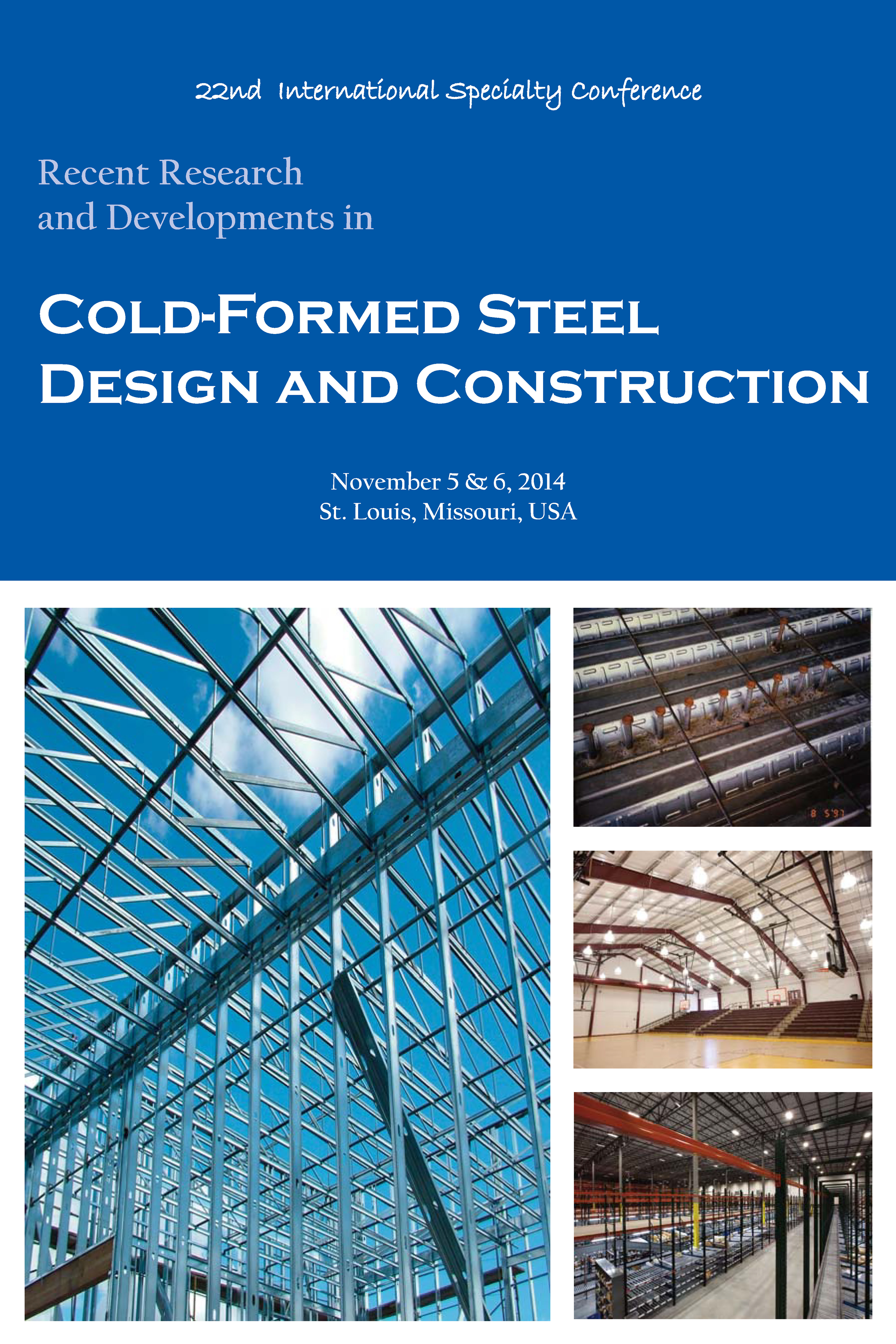Session Dates
05 Nov 2014
Abstract
Geometric imperfections play an important role in the performance and behavior of cold-formed steel members. The objective of this paper is to detail a newly developed imperfection measurement rig, where the full three-dimensional (3D) imperfect geometry of a cold-formed steel member can be measured and reconstructed. The measurement results in a dense three-dimensional point cloud that may be utilized to provide precise knowledge of the basic member dimensions (width, angle, radius including variation along the length), frequency content in the member (waviness, local dents, etc.), or directly as the exact geometry of the member. Practical applications of the data include basic quality control; however, the potential of the data is truly realized when applied to shell finite element models of cold-formed steel members to investigate imperfection sensitivity. The measurement rig set-up (Phase I) consists of three basic parts: a two-dimensional (2D) laser scanner with measurement range up to 304 mm [12 in.]; a linear drive system, allowing the laser to collect measurements of cross sections along the length of the target specimen; and a support beam. The raw point cloud data from the Phase I rig is input into MATLAB where custom postprocessing is employed to develop the full 3D reconstruction of the target specimen. The Phase II rig adds a rotary ring, providing a rotational stage for the laser so that the cross section of the target specimen may be profiled from any direction. This paper provides several examples of full-field imperfection measurements and compares against other methods in current use. The measured imperfections contribute to the database of realized imperfections appropriate for the generation of stochastic imperfections for use in simulation. Accurate knowledge of geometric imperfections is critical to the long-term success of analysis-based design paradigms for cold-formed steel.
Department(s)
Civil, Architectural and Environmental Engineering
Research Center/Lab(s)
Wei-Wen Yu Center for Cold-Formed Steel Structures
Sponsor(s)
National Science Foundation (U.S.)
Meeting Name
22nd International Specialty Conference on Cold-Formed Steel Structures
Publisher
Missouri University of Science and Technology
Document Version
Final Version
Rights
© 2014 Missouri University of Science and Technology, All rights reserved.
Document Type
Article - Conference proceedings
File Type
text
Language
English
Recommended Citation
Zhao, Xi and Schafer, Benjamin W., "Laser Scanning to Develop Three-Dimensional Fields for the Precise Geometry of Cold-Formed Steel Members" (2014). CCFSS Proceedings of International Specialty Conference on Cold-Formed Steel Structures (1971 - 2018). 7.
https://scholarsmine.mst.edu/isccss/22iccfss/session01/7
Laser Scanning to Develop Three-Dimensional Fields for the Precise Geometry of Cold-Formed Steel Members
Geometric imperfections play an important role in the performance and behavior of cold-formed steel members. The objective of this paper is to detail a newly developed imperfection measurement rig, where the full three-dimensional (3D) imperfect geometry of a cold-formed steel member can be measured and reconstructed. The measurement results in a dense three-dimensional point cloud that may be utilized to provide precise knowledge of the basic member dimensions (width, angle, radius including variation along the length), frequency content in the member (waviness, local dents, etc.), or directly as the exact geometry of the member. Practical applications of the data include basic quality control; however, the potential of the data is truly realized when applied to shell finite element models of cold-formed steel members to investigate imperfection sensitivity. The measurement rig set-up (Phase I) consists of three basic parts: a two-dimensional (2D) laser scanner with measurement range up to 304 mm [12 in.]; a linear drive system, allowing the laser to collect measurements of cross sections along the length of the target specimen; and a support beam. The raw point cloud data from the Phase I rig is input into MATLAB where custom postprocessing is employed to develop the full 3D reconstruction of the target specimen. The Phase II rig adds a rotary ring, providing a rotational stage for the laser so that the cross section of the target specimen may be profiled from any direction. This paper provides several examples of full-field imperfection measurements and compares against other methods in current use. The measured imperfections contribute to the database of realized imperfections appropriate for the generation of stochastic imperfections for use in simulation. Accurate knowledge of geometric imperfections is critical to the long-term success of analysis-based design paradigms for cold-formed steel.




Comments
This work was partially funded by the National Science Foundation (NSF), Grant 1235196.